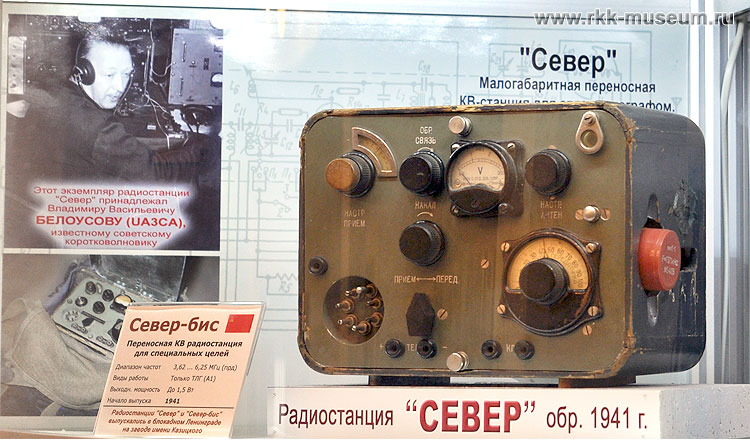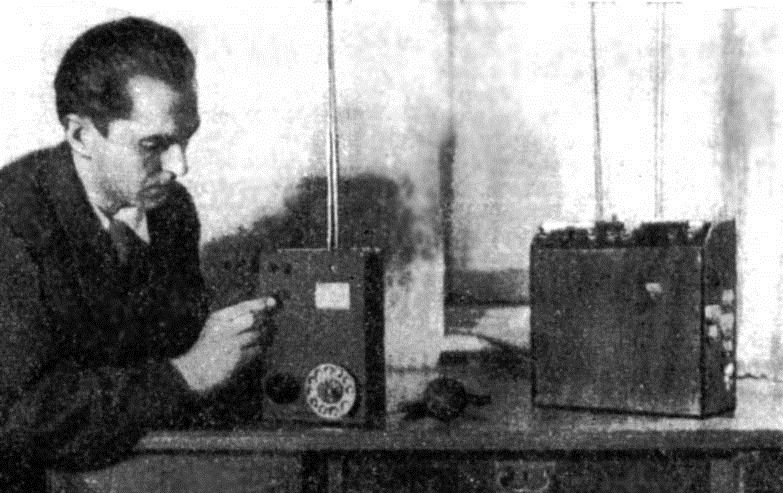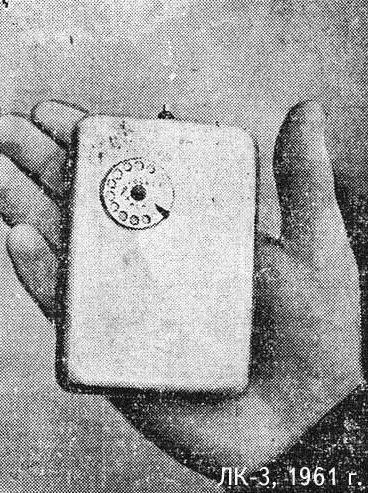Mobile communications in the USSR

The high-tech projects of the USSR in the 20th century thundered to the whole world — the first satellite, Vostok-1, seven Soviet atomic icebreakers; but there are technologies about which we know not so much.
Most often we mention mobile communication in the context of cellular communication. Mobile communication is any mobile wireless communication over the air. In this context, we will tell about the history of the development of radio communications between subscribers in the USSR.
First projects

( c )
')
Signalers have made a significant contribution to the successful completion of World War II - radio communication has become an important means of operational command and control of troops.
Still, it was sometimes difficult to use transceivers without special knowledge - this kind of communication cannot be called truly mass.
The 1942 brochure on the design and operation of the Severis transmitter began with a succinct presentation of the theory of long-range short-wave propagation and instructions for determining the optimal frequencies for long distances. Imagine that such an instruction would be issued to all mobile subscribers.
The need to somehow improve the specific military connection spurred inventive thought. Engineer Georgy Ilyich Babat, being in besieged Leningrad, proposed the idea of creating a “monophon” - an automatic radiotelephone operating in the centimeter range of 1000–2000 MHz. It was the first (from the known to us) detailed project of civil mobile communications.
After the Great Patriotic War, Soviet engineers-inventors G. Babat, G. Shapiro and I. Zakharchenko developed a telephone communication system for a car. The base station was a radio set on a city telephone exchange.
In 1946, tests were carried out, which resulted in communication from a moving car at a distance of 20 km from the base station. In the future, the inventors were able to increase the range of the device to 150 km.
Independently of each other, different concepts of mobile communication development are beginning to appear in the Soviet press. Thus, in one of the projects, the idea was considered of putting radio receivers on the roofs of city telephone stations for communicating with subscribers. The inventors wanted to achieve with the new type of communication maximum comfort for people not familiar with the theory of waves and frequencies.
In 1957, engineer Leonid Ivanovich Kupriyanovich demonstrated a three-kilogram prototype mobile phone LK-1. Kupriyanovich not only created a telephone, but also developed a base station for him - an automatic telephone radio station that communicated with a wired telephone network.

On the left - the first sample of the LK-1 mobile phone, on the right - the Kupriyanovich base station
LK-1 could work from 20 to 30 hours and provide communication using two antennas within 20-30 kilometers. Such details we know only from the description in the newspapers. Only one communication session that lasted several minutes was documented.

Mobile phone with a nickel-cadmium power source (concept).
A year later, Kupriyanovich introduced a new prototype, which weighed already 500 grams. However, the inventor did not stop at this and made a walkie-talkie weighing only 70 grams. (along with batteries). There is no reliable information about whether the device worked at all. However, according to the description from the magazine “Young Technician”, it had to “work without changing the power supply for 50 hours and provided communication at a distance of two kilometers”.
Altai: 0G

Professional mobile communications system "Altai" ( c )
Kupriyanovich’s developments did not go into the series, however, in terms of technology, there was nothing unique about them. The system of affordable mobile communications was in demand at the highest levels of the state and implemented in the same years (development began in 1958), regardless of the ideas of the nugget engineer.
Fully automatic mobile communications first appeared in the world in the USSR: in 1963, Altai was launched in the state importance system. First, the system worked in the 150 MHz band, and later the 330 MHz band was used. Altai was equipped with an automatic signal transmission system from a mobile communication channel to the public telephone network.
Here, as in the cellular network, there were their own base stations, but the "transfer" of the subscriber between the stations was not provided. Each station served only its own zone, designed for 250-300 subscribers. As a rule, in each city there was only one base station with up to 22 independent radio links of eight channels each.
This project was practically not controlled by the military, and was presented at the industrial exhibition in Brussels. The main users of Altai are officials and managers of the most important enterprises. Many preferred to install the telephone not in the workplace, where regular telephone communication was available, but in the car, which made it possible to respond quickly to important calls.
By the end of the 60s, Altai had already allowed switching from manual connection through a telephone operator to automation. In addition, a conference call mode, a call according to abbreviated numbering, a call of several subscribers at the same time, a sequence of calls over a free channel with the ability to set priority were implemented.
By the 1980 Olympics, the Altai base station was moved to the Ostankino tower, which allowed it to provide almost all journalists with reliable communications at Moscow’s stadiums.
In the mid-80s, Altai was fully represented in 114 Soviet cities - this time period is the peak of the system’s development, after which the natural decline begins, caused by both the financial problems of the state and the appearance of a powerful competitor in 1991, GSM.
"Volemot"

Subscriber radio station "Volemot-ARS" ( c )
The abbreviation is formed by the names of the cities where the developers of the new promising communication system were located: Voronezh, Leningrad, Molodechno, Ternopil.
Altai had a significant limit on the number of subscribers connected to the network, while society clearly needed a system capable of connecting more users (ideally, all). This problem was solved by “Volemot”, for the rest did not have significant differences from the “Altai”.
The system was launched in a number of cities in the early 90s and lasted in separate places (taxi, ambulance) until the early 2010s. Around the same time, Altai ended its existence.
The origin of satellite communications

One of the ground stations of the Orbit system ( c )
The history of satellite communications in Russia began in 1965, when the Molniya-1 satellite was launched to provide communications between Moscow and Vladivostok. Since October 1967, the Molniya satellites, together with 20 ground stations, were used as part of the Orbit space communications project for broadcasting the national television network, as well as for two-way telephone, telegraph and photo-telegraph communications.
The dual-purpose communications satellites of the project “Lightning” existed and developed until the beginning of the 21st century. The last satellite, Molniya-3K, was launched in 2001, and descended from orbit in December 2016. They were replaced by satellites operating in stationary orbits: Raduga for communication, and Ekran for a television signal. For new satellites, ground stations are no longer needed, just put yourself an antenna.
In addition to satellite communications, a tropospheric radio relay developed in the Soviet Union, in which radio waves at an altitude of 10–15 km are reflected from the upper boundary of the troposphere and enter the receiver. Due to this, the distance between the receiver and the transmitter can reach 400-600 km. Multichannel radio-relay stations using the ultra-high frequency range allowed creating a reliable connection with the most remote settlements of the country, which are far beyond the Arctic Circle. A total of 46 communication stations were built. The total length of radio relay lines exceeded 100 thousand km.
Source: https://habr.com/ru/post/349178/
All Articles